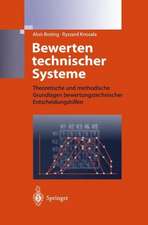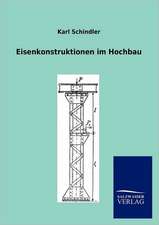Virtual Reality Technology and Applications: Intelligent Systems, Control and Automation: Science and Engineering, cartea 68
Autor Matjaž Mihelj, Domen Novak, Samo Begušen Limba Engleză Hardback – 16 sep 2013
After providing a brief introduction to the topic, the book describes the kinematic and dynamic mathematical models of virtual worlds. It explores the many ways a computer can track and interpret human movement, then progresses through the modalities that make up a virtual world: visual, acoustic and haptic. It explores the interaction between the actual and virtual environments, as well as design principles of the latter. The book closes with an examination of different applications, focusing on augmented reality as a special case. Though the content is primarily VR-related, it is also relevant for many other fields.
| Toate formatele și edițiile | Preț | Express |
|---|---|---|
| Paperback (1) | 637.78 lei 6-8 săpt. | |
| SPRINGER NETHERLANDS – 27 aug 2016 | 637.78 lei 6-8 săpt. | |
| Hardback (1) | 723.35 lei 6-8 săpt. | |
| SPRINGER NETHERLANDS – 16 sep 2013 | 723.35 lei 6-8 săpt. |
Din seria Intelligent Systems, Control and Automation: Science and Engineering
- 18%
 Preț: 890.23 lei
Preț: 890.23 lei - 24%
 Preț: 672.02 lei
Preț: 672.02 lei - 18%
 Preț: 951.59 lei
Preț: 951.59 lei - 15%
 Preț: 647.27 lei
Preț: 647.27 lei - 15%
 Preț: 644.63 lei
Preț: 644.63 lei - 18%
 Preț: 1246.15 lei
Preț: 1246.15 lei - 18%
 Preț: 1011.45 lei
Preț: 1011.45 lei - 20%
 Preț: 752.69 lei
Preț: 752.69 lei - 18%
 Preț: 1230.66 lei
Preț: 1230.66 lei - 18%
 Preț: 1839.32 lei
Preț: 1839.32 lei - 18%
 Preț: 719.59 lei
Preț: 719.59 lei - 15%
 Preț: 636.12 lei
Preț: 636.12 lei - 18%
 Preț: 1112.15 lei
Preț: 1112.15 lei - 18%
 Preț: 1836.31 lei
Preț: 1836.31 lei - 18%
 Preț: 1236.51 lei
Preț: 1236.51 lei - 20%
 Preț: 988.81 lei
Preț: 988.81 lei - 20%
 Preț: 357.15 lei
Preț: 357.15 lei - 15%
 Preț: 640.71 lei
Preț: 640.71 lei - 18%
 Preț: 1835.83 lei
Preț: 1835.83 lei - 18%
 Preț: 947.98 lei
Preț: 947.98 lei - 18%
 Preț: 962.98 lei
Preț: 962.98 lei - 15%
 Preț: 643.48 lei
Preț: 643.48 lei - 18%
 Preț: 951.47 lei
Preț: 951.47 lei - 18%
 Preț: 950.84 lei
Preț: 950.84 lei - 20%
 Preț: 1924.47 lei
Preț: 1924.47 lei - 15%
 Preț: 644.30 lei
Preț: 644.30 lei - 20%
 Preț: 556.65 lei
Preț: 556.65 lei - 18%
 Preț: 952.72 lei
Preț: 952.72 lei - 18%
 Preț: 953.97 lei
Preț: 953.97 lei - 18%
 Preț: 951.14 lei
Preț: 951.14 lei
Preț: 723.35 lei
Preț vechi: 882.13 lei
-18% Nou
Puncte Express: 1085
Preț estimativ în valută:
138.43€ • 143.99$ • 114.28£
138.43€ • 143.99$ • 114.28£
Carte tipărită la comandă
Livrare economică 12-26 aprilie
Preluare comenzi: 021 569.72.76
Specificații
ISBN-13: 9789400769090
ISBN-10: 9400769091
Pagini: 233
Ilustrații: X, 231 p. 169 illus., 35 illus. in color.
Dimensiuni: 155 x 235 x 22 mm
Greutate: 0.48 kg
Ediția:2014
Editura: SPRINGER NETHERLANDS
Colecția Springer
Seria Intelligent Systems, Control and Automation: Science and Engineering
Locul publicării:Dordrecht, Netherlands
ISBN-10: 9400769091
Pagini: 233
Ilustrații: X, 231 p. 169 illus., 35 illus. in color.
Dimensiuni: 155 x 235 x 22 mm
Greutate: 0.48 kg
Ediția:2014
Editura: SPRINGER NETHERLANDS
Colecția Springer
Seria Intelligent Systems, Control and Automation: Science and Engineering
Locul publicării:Dordrecht, Netherlands
Public țintă
GraduateCuprins
Preface.- Introduction to virtual reality.- 2 Degrees of freedom, pose, displacement and perspective.- 3 Dynamic model of a virtual environment.- 4 Tracking the user and environment.- 5 Visual modality in virtual reality.- 6 Acoustic Modality in Virtual Reality.-
7 Haptic modality in virtual reality.- 8 Augmented reality.-
9 Interaction with a virtual environment.- 10 Design of a multimodal virtual environment.- Index.
7 Haptic modality in virtual reality.- 8 Augmented reality.-
9 Interaction with a virtual environment.- 10 Design of a multimodal virtual environment.- Index.
Recenzii
“Virtual Reality Technology and Applications is a fascinating book about virtual reality. It includes both primary and professional information for understanding current technologies and trends for creating VR environments. … This book is a good primer for learning about practical and theoretical aspects of virtual reality. … I highly recommend this book if you are beginning a VR career or need to learn about VR.” (Jeff Thurston, 3dvisworld.com, April, 2014)
Notă biografică
Matjaz Mihelj graduated from the Faculty of Electrical Engineering, University of Ljubljana, Slovenia in 1996. In October 1997 he became a research staff member and in October 1998 a teaching assistant for robotic courses in the Laboratory of Biomedical Engineering and Robotics at the Faculty of Electrical Engineering in Ljubljana. He received M.Sc. and D.Sc. degrees in biomedical engineering from the Faculty of Electrical Engineering, University of Ljubljana in 1999 and 2002, respectively. For his diploma thesis he was awarded by the Slovenian Ministry of Science and Technology and ISKRA Holding with the Bedjani award. In 2001 he was a visiting researcher at Tohoku University, Sendai, Japan. From May 2005 till April 2006 he spent one year as a visiting researcher at the Automatic Control Laboratory of the Swiss Federal Institute of Technology (ETH Zurich). The research on the rehabilitation robotics performed at ETH Zurich was awarded with the Swiss Technology Award. Since 2009 he has been affiliated as an associate professor. He gives fifth year control system lectures on the man/machine interaction topic with the main focus on multimodal systems based on haptic devices. His current research interests are in man/machine interaction, haptic interfaces as well as modeling and control of biological systems with the main focus on restoration of lost functions in people with disabilities. Dr. Mihelj is a member of IFMBE and IFESS. Janez Podobnik received the B.Sc. and D.Sc. degrees in electrical engineering from the University of Ljubljana, Slovenia in 2004 and 2009, respectively. He was born in 1980 in Ljubljana, Slovenia. He attended Faculty of Electrical Engineering, University of Ljubljana, Slovenia, where he obtained the B.Sc. degree in Electrical Engineering in 2004. His B.Sc. thesis covered stability of haptic interface. He received a Ph.D. degree from the Faculty of Electrical Engineering, University of Ljubljana in 2009. He is currently a teaching assistant in the Laboratory of Biomedical Engineering and Robotics, at the same faculty. His research interests include various applications of haptic interface.
Textul de pe ultima copertă
As virtual reality expands from the imaginary worlds of science fiction and pervades every corner of everyday life, it is becoming increasingly important for students and professionals alike to understand the diverse aspects of this technology. This book aims to provide a comprehensive guide to the theoretical and practical elements of virtual reality, from the mathematical and technological foundations of virtual worlds to the human factors and the applications that enrich our lives: in the fields of medicine, entertainment, education and others.
After providing a brief introduction to the topic, the book describes the kinematic and dynamic mathematical models of virtual worlds. It explores the many ways a computer can track and interpret human movement, then progresses through the modalities that make up a virtual world: visual, acoustic and haptic. It explores the interaction between the actual and virtual environments, as well as design principles of the latter. The book closes with an examination of different applications, focusing on augmented reality as a special case. Though the content is primarily VR-related, it is also relevant for many other fields.
After providing a brief introduction to the topic, the book describes the kinematic and dynamic mathematical models of virtual worlds. It explores the many ways a computer can track and interpret human movement, then progresses through the modalities that make up a virtual world: visual, acoustic and haptic. It explores the interaction between the actual and virtual environments, as well as design principles of the latter. The book closes with an examination of different applications, focusing on augmented reality as a special case. Though the content is primarily VR-related, it is also relevant for many other fields.
Caracteristici
Presents the main technological and design aspects of virtual reality in a concise form Provides theoretical background for all sensing and feedback modalities of virtual reality systems (including kinematics and dynamics of virtual environments) Theoretical and practical aspects are illustrated with more than 170 detailed figures explaining basic principles




























